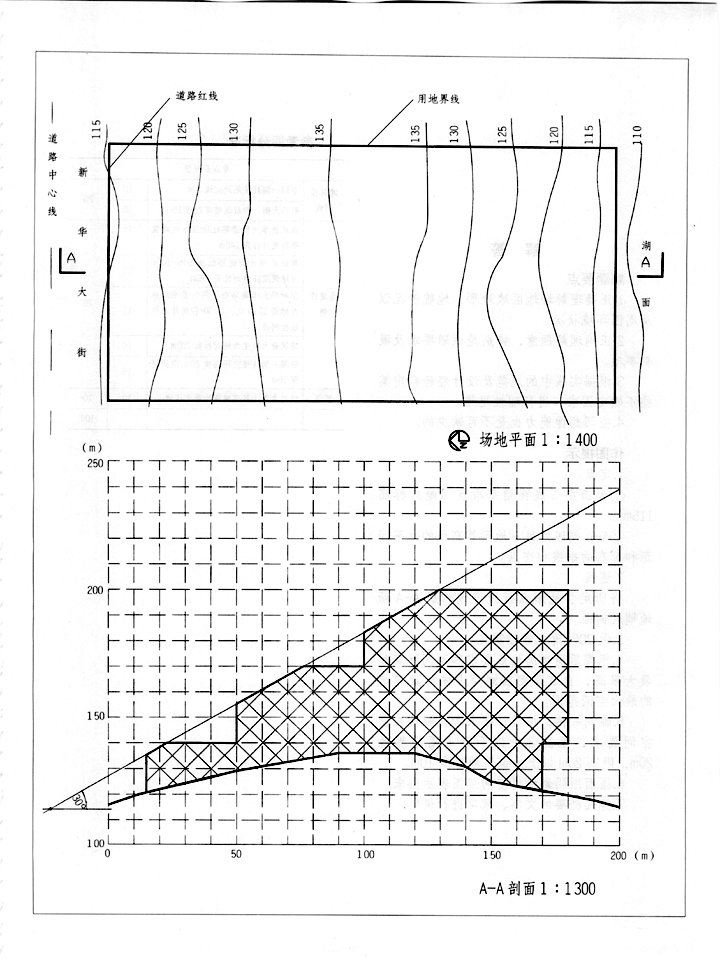问题
问答题
沿湖一侧建筑控制线退后用地红线30m,骑楼空间高度20m,骑楼空间进深10m。 2.新华大街一侧建筑控制线退后道路红线15m。 3.靠近新华大街道路红线50m内的建筑限高绝对标高140m;50~100m内限高绝对标高170m。 4.在新华大街道路中心线的基准点绝对标高115m处,以30°仰角作为视觉控制线。 5.该建筑空间最大限高为绝对标高200m。
答案
参考答案:

解析:
1.正确理解场地区域地形、地貌情况以及周围环境状况。
2.正确理解题意,特别是试题要求及限制事项。
3.根据实践中的规范及设计经验判定某些不确定因素,进行理性思维。
4.空间想像能力也是不可缺少的。
[作图提示]
1.定点①大街中心线视角基准点(绝对标高115m)。②A-A剖线处每一地形等高线的水平间距和标高的垂线相交点。
2.连线将所定各地形点折线连线构成A-A场地地表剖面。
3.做30°角视觉控制线。
4.根据后退道路红线要求和不同限高和最大限高,自道路侧向湖面方向标定建筑的最大空间范围。
5.1临湖一侧,按设计要求考虑骑楼布置空间要求,限高20m以下后退用地界线20m,限高20m以上后退用地界线10m。
6.画面用阴影线将空间范围表示出来。
7.标注必要的文字、数字进行说明。
